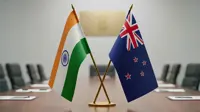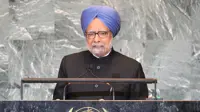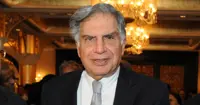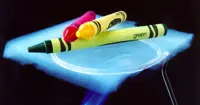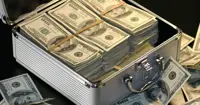Hollywood spy tech exhibition opens
By Our Convergence Bureau | 18 Feb 2002
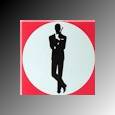 The exhibit, which opened at the Ronald Reagan Presidential
Library near Los Angeles on 16 February, ranges from the
whimsical to the deadly, everything from the shoe phone
made famous by Don Adams in the TV show Get Smart
to a KGB umbrella used to shoot poison-tipped darts of a
kind once used to assassinate a Bulgarian dissident in London.
The exhibit, which opened at the Ronald Reagan Presidential
Library near Los Angeles on 16 February, ranges from the
whimsical to the deadly, everything from the shoe phone
made famous by Don Adams in the TV show Get Smart
to a KGB umbrella used to shoot poison-tipped darts of a
kind once used to assassinate a Bulgarian dissident in London.The show, Secrets from the CIA, KGB and Hollywood, also includes the tarantula that threatened James Bond in Dr No, Emma Peals leather pants from The Avengers, and a nineteenth century spy camera designed to be strapped to a pigeon.
The blend of fact and fiction is fitting, given the way that the Cold War clandestine productions sometimes followed the lead of the celluloid spooks and sometimes anticipated them in ways that their Hollywood creators never imagined.
The spy who came in from the movies
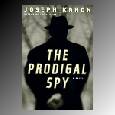 Many of the people who work for the CIA grew up on these
spy shows just like I did, says Danny Biederman, a screenwriter,
whose lifelong fascination with the genre prompted the collection
of more than 4,000 props and gizmos on partial display.
Many of the people who work for the CIA grew up on these
spy shows just like I did, says Danny Biederman, a screenwriter,
whose lifelong fascination with the genre prompted the collection
of more than 4,000 props and gizmos on partial display.Biederman loaned his souvenirs to the CIA two years ago for an eyes-only exhibit at the agencys headquarters in Virginia. Now, the CIA museum (motto: The Best Museum You've Never Seen) has taken that show to the public at the Reagan Library, along with a sampling of spy artifacts from the National Archives and the private collection of Keith Melton.
The real-world spy gear on display ranges from a hollowed-out bullet used during the American Revolution to hide secret messages to a replica of an elaborate carved seal presented by the Soviet Union to the US ambassador shortly after World War II, complete with hidden listening device.
Theres a progression here of the development of the technology of espionage, says Lloyd Salveti, the director of the CIAs Center for the Study of Intelligence, on hand for the exhibit opening in Simi Valley, California.
The CIAs purpose in sponsoring the exhibit is to stress the role the intelligence service has played in presidential decision-making, says Salvetti. To that end, one of the binders used for President Bushs daily CIA briefings is on hand, emptied of course of its sensitive contents.
But the bigger question raised by the exhibit may be how much the Hollywood spy genre borrowed from events and where it anticipated or shaped the way the spy game has been played.
British author Ian Fleming, who created the archetypal spy in James Bond, had also been a British naval intelligence officer, an important precedent in blurring the lines between modern spy fact and fiction, say Biederman.
Or consider that the CIAs real-life Office of Technical Services, where covers are created and a new generation of spy gadgets made, has a creative motto that would make any movie studio proud: Imagine what is possible - then prepare to be amazed.
Cloak and daggers
Spies have even played movie people, most famously in 1979 when Iranian militants stormed the US embassy in Tehran and held some 50 hostages.
As the incident unfolded, six US diplomats managed to find refuge in the nearby Canadian Embassy, prompting a successful CIA-directed plan to smuggle them out by sending agents into Iran disguised as a film crew. This would not have been possible without the close cooperation of the patriotic people of Hollywood, says Salvetti.
Biederman, who lives in Los Angeles with his wife and three children Ilya, Moriah Flint and Bond all named for fictional spies, said some in the agency also shared his love for TV classics like The Man from UNCLE.
Some CIA agents told him that in the 1960s: They would be watching Mission Impossible and saying, Why cant we come up with something like this?


